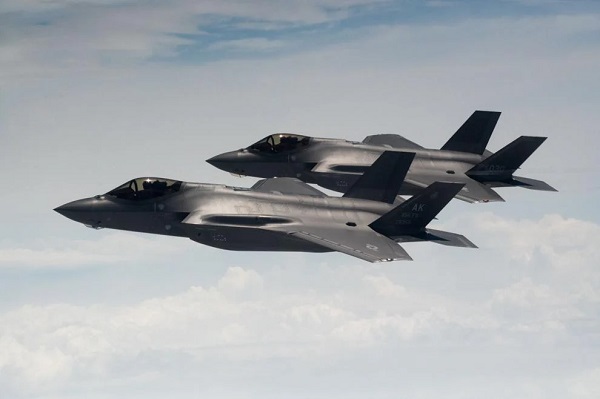By Brett Rowland
The Pentagon has about 630 F-35s. It plans to buy about 1,800 more. And it intends to use them through 2088. DOD estimates the F-35 program will cost over $2 trillion to buy, operate, and sustain over its lifetime.
Pentagon officials declined to comment on Elon Musk’s critical assessment of its most expensive project, the F-35 stealth fighter.
Tesla CEO and SpaceX leader Elon Musk called the Pentagon’s stealth fighter “obsolete.”
“The F-35 design was broken at the requirements level, because it was required to be too many things to too many people,” Musk wrote on X. “This made it an expensive & complex jack of all trades, master of none. Success was never in the set of possible outcomes. And manned fighter jets are obsolete in the age of drones anyway. Will just get pilots killed.”
In May, The U.S. Government Accountability Office found the cost of the Pentagon’s most expensive weapon system was projected to increase by more than 40% despite plans to use the stealth fighter less, in part because of reliability issues.
The U.S. Department of Defense’s F-35 Lightning II is the most advanced and costly weapon system in the U.S. arsenal. It’s a joint, multinational program that includes the Air Force, Navy, Marine Corps, seven international partners and foreign military sales customers.
The Pentagon has about 630 F-35s. It plans to buy about 1,800 more. And it intends to use them through 2088. DOD estimates the F-35 program will cost over $2 trillion to buy, operate, and sustain over its lifetime.
On Tuesday, a reporter asked Defense Department Press Secretary Air Force Major General Pat Ryder about Musk’s comments on the F-35.
“Yeah, as I’m sure you can appreciate, Mr. Musk is, currently, a private citizen, I’m not going to make any comments about what a private citizen may have to say about the F-35.”
The GAO report found the F-35 program fell short of its goals.
“The F-35 fleet is not meeting most of its performance goals, including those for availability and for reliability and maintainability, according to DOD and contractor data,” according to the report. “We have consistently found that the F-35 fleet is not meeting its availability goals, which are measured by mission capable rates despite increasing projected costs.”
President-elect Donald Trump recently picked Musk and Vivek Ramaswamy leaders of the newly created Department of Government Efficiency, or DOGE.
Trump said the new group will allow his administration to “dismantle government bureaucracy, slash excess regulation, cut wasteful expenditures and restructure federal agencies.”
Ramaswamy and Musk detailed some of their plans for DOGE last week. Those plans include a focus on military spending after the Pentagon failed another audit.
“The Pentagon recently failed its seventh consecutive audit, suggesting that the agency’s leadership has little idea how its annual budget of more than $800 billion is spent,” they wrote in an op-ed published in the Wall Street Journal.
The U.S. Department of Defense’s annual audit once again resulted in a disclaimer opinion. That means the federal government’s largest agency — with a budget of more than $840 billion — can’t fully explain its spending. The disclaimer this year was expected. And it’s expected again next year. The Pentagon previously said it will be able to accurately account for its spending by 2027.

















